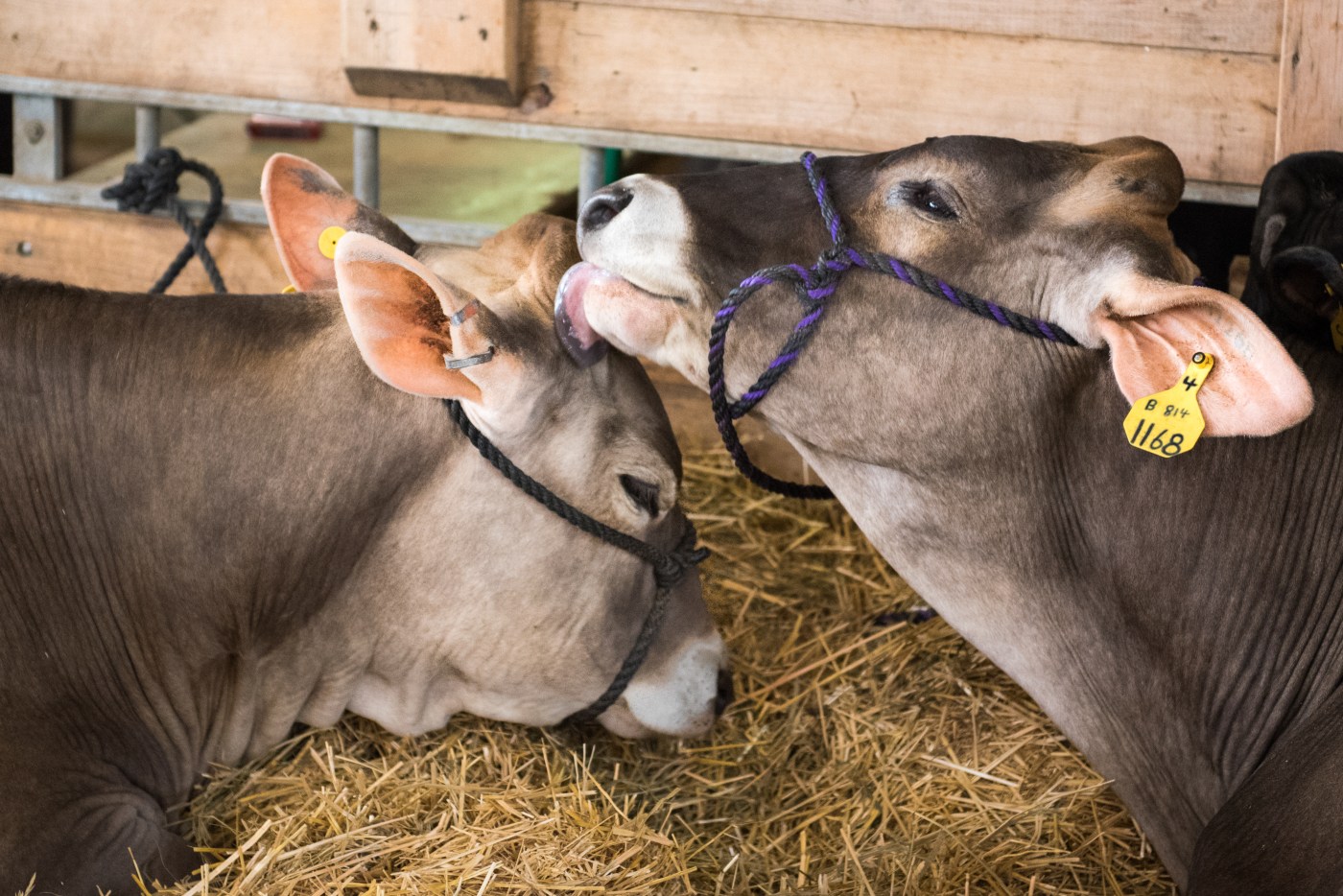
Wolves, deer and elk all have Minnesota cattle producers on edge going into 2024
Several cattle producers and leaders at the Minnesota Cattle Industry Convention in Alexandria this month spoke about the increase in worrisome dealings with wild animals, including wolves, deer and the potential for a new introduction of elk.
Gray wolves are just one of many topics of discussion among Minnesota cattle producers preparing for the year ahead in 2024. (Minnesota Department of Natural Resources)
Cattle producers in northern and central Minnesota are increasingly dealing with unwelcome interactions with wolves on their property bringing concerns of cattle losses.
“Man, it’s awful. And it’s the same thing, some guys, you just get sick of it. You lose 10 calves, you lose your profitability,” said Jake Thompson, president of the Minnesota State Cattlemen’s Association, of the reports of wolves on cattle operations.
The Minnesota Department of Natural Resources estimated the state’s wolf population at 2,691 from about 500 packs in 2022.
“We have major issues in northern Minnesota with wolves that are killing calves, so that’s a huge loss for producers,” according to Kaitlyn Root, executive director of the Minnesota State Cattlemen’s Association.
Minnesota Wildlife Services reported receiving 139 calls for wolf damage in 2022. Half of them were verified as wolf-killed or injured domestic animals or public safety concerns. In response, 147 wolves were killed.
Cow/calf depredation remains the largest group of domestic livestock attacked by wolves. Over $100,000 was paid to Minnesota producers in 2022 for cattle lost to wolves, according to the Minnesota Department of Agriculture.
Related to that spike in the wolf interactions, another group not associated with a cattle group has formed. Hunters4Hunters wants to tackle the wolf population for other reasons, though, so they can once again hunt deer. Many hunters in the group indicated seeing more wolves in the woods than deer.
While hunters want to see more deer, cattle producers, at least in central and southern Minnesota, are still seeing more deer than they care to see.
Deer depredation
Central and southern Minnesota have an abundance of deer eating and destroying feed stored away for their cattle. Eating the feed is one issue; another is the amount of feces and potential disease that the deer are adding to the mix.
A doe peeks out from under some conifer trees in the Elephant Lake deer yard north of Orr, Minn. in an undated courtesy photo. The deer yard’s cedar trees are one of the largest wintering areas for deer in the region. The DNR and other groups are working to restore more conifer cover in Northeastern Minnesota, critical for winter survival for deer at the northern fringe of their range, especially with heavy snow winters becoming more common. ( Penny Backman / Minnesota Department of Natural Resources)
“It didn’t matter if I was in Carlisle, Minn., (in west-central Minnesota) or down in Pipestone (in southwest Minnesota), was the deer depredation issue for feed,” Thompson said. “Obviously with the snow last year, we had a lot of deer herd up, but I think we’re seeing it more and more. It’s becoming more of a regular occurrence. It is all over; it don’t matter where you are at.”
The amount of damage to stored hay and silage brought about major pains for those trying to make their feed last throughout a drought. It’s led to multiple conversations with the DNR about how they can solve the problem. It’s one issue they hope to tackle in the upcoming legislative session.
Thompson said conversations with the Minnesota Soybean Growers Association led to an effort on a bill that sought to provide assistance for depredation last session.
“They weren’t successful at it,” Thompson said. He hopes to get some funds approved in the incoming session that can address losses that cattle producers continue to sustain.
Elk introduction
Elk were once distributed throughout Minnesota, but their population diminished due to overharvest and conversion of prairie to farmland in the early 1900s, according to the Minnesota DNR. According to the University of Minnesota, there are about 100 elk in the far northwest corner of the state, which travel back and forth between Minnesota and Manitoba.
In this undated photo provided by the Minnesota Department of Natural Resources, elk are seen in the snow near Grygla, Minn. The Fond du Lac Band of Ojibwe is seeking $300,000 from the Legislature for a two-pronged study on the feasibility of restoring elk to northeastern Minnesota. (Marshal Deters/Minnesota Department of Natural Resources via AP)
But a new plan to reintroduce elk in the northeast part of the state in Carlton County — elk moved from the northwestern corner of Minnesota — has hatched. This reintroduction plan was proposed by Fond du Lac Band of Lake Superior Chippewa.
The Carlton County Commission discussed establishing an elk holding pen on tax forfeited property managed by the Minnesota DNR and Fond du Lac Band at their recent Dec. 15 board meeting. The elk are to be acclimated in the pen, and eventually up to 300 elk would be released in the Fond du Lac Forest and the Fond du Lac Reservation, about 30 miles from Duluth. Establishment of this herd could begin as soon as 2026. This project has been in talks since 2014, according to the Duluth News Tribune.
University of Minnesota researchers in 2017 and 2018 showed plenty of wild food for elk to eat. And a major public opinion study in 2019 by U researchers found strong support for elk among the general public and among rural landowners across the region.
But the elk in northwest Minnesota have a storied past of creating issues for farmers, including eating and trampling crops as well as destroying fences. The concern is that these same issues will now grow out of this area of northeast Minnesota.
“We have producers in the northern part of the state that deal with the elk herds in that area already, and elk are awful on things,” Thompson said.
With the convention complete, Thompson looked to have the Cattlemen’s Association opinions coming together to give their guidance to these wildlife issues.
Thompson also spoke of another non-animal-related concern including increased regulations coming out of the White Earth Tribal Nation. He said while the focus has been on how these secondary regulations are inhibiting use of water for crops, it has wide-spreading concerns for the cattle industry as well. He noted that two hog operations and two tiling projects near or within the tribal lands were stopped.
On top of that are an increased emphasis on nitrates in water, taxes and drought to keep up with for 2024.
Related Articles
Skywatch: Bring in 2024 in a stellar way
New ice fishing law aims to keep Minnesota lakes cleaner
ATV breaks through Red Lake ice, riders make it to shore wet and cold
Skywatch: Signs of Christmas in the skies
Calling all volunteers: Minnesota DNR has a job for you

